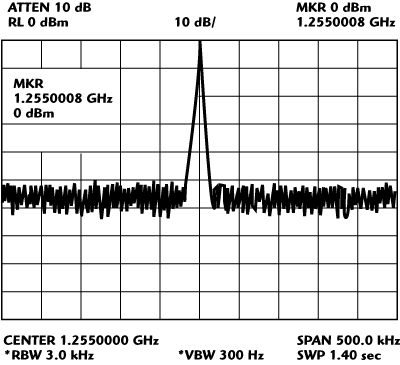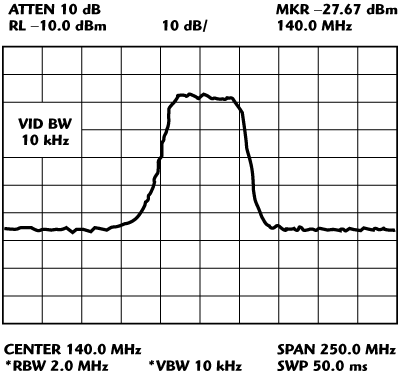Noise considerations are a key factor in the design of radio systems of all types and designers expend much effort in reducing system noise. Testing radio systems by inserting white Gaussian noise along with the signal has been a recognized test method for decades, but there are surprisingly few providers of test platforms with the capability to use this simple methodology. The prime users are both commercial and military and encompass both terrestrial and satellite networks as well as radar systems.
To address this market and to satisfy the various applications, Atlan-TecRF has developed the ANG series of broadband noise generators, in both benchtop and rack-mount packages, that cover a wide frequency range and can be uniquely customized for testing many types of radio systems. The ANG series includes units that start at 10 Hz and operate up to a few hundred kHz for testing audio and baseband circuits, while the upper frequency limit of the range includes units with outputs up to 18 GHz. Figure 1 shows the frequency response and roll-off for Atlan-TecRF model ANG1613, 10 MHz to 2.5 GHz.

Figure 1 Noise output over full operational band.
The range also includes models that offer high output power, up to +30 dBm total power, and all units are available with built-in variable attenuators, both manual and remotely controllable, that can be user specified for lower levels of injection. In addition to internal attenuators, key options include an internal signal combiner for injecting a signal from an external signal generator for carrier to noise ratio (CNR) testing, as illustrated in Figure 2.

Figure 2 Noise output with signal combiner input.
Output connector styles (SMA, N type, BNC, TNC) can be selected to suit the user application, and for low frequency units (< 2 GHz) an output impedance of 75 Ω can be specified. Adding attenuators reduces the maximum noise output level by the insertion loss of the selected attenuator module.
Typical applications can be both military and commercial, with perhaps the most well-known being carrier/noise testing of commercial radio networks, satellite systems and radar systems. The units can also be used for baseband signal simulation of communications systems to mimic simulated models and jitter testing. Noise generators are also frequently used as part of a built-in test equipment (BITE) system, particularly in the military arena.
Commercial Applications
Over many years commercial frequency division multiplex (FDM) telecommunications providers utilized noise power ratio (NPR) as a measurement of signal quality and distortion in their analogue radio systems. Although not used so frequently today, it remains a valid methodology for which a higher power noise source, like those of the AtlanTecRF ANG series, is required. Matching bandpass and bandstop filters are required to use this test method.
Modern digital radio and satellite systems utilize related methods, the most common being CNR versus Bit Error Rate (BER) or EbNo versus BER, where EbNo is defined as bit energy divided by noise power density in dBm per Hz of bandwidth.
The ANG series includes units that cover the intermediate frequency (IF) ranges of both digital radio systems (70 and 140 MHz) and satellite systems (950 to 2150 MHz) that can be employed for either CNR or EbNo measurements. The optional signal combiner input would normally be specified for these measurements. A real signal can then be injected into the receiving system and then degraded with an increasing level of Gaussian white noise from the noise generator until the signal to noise ratio for a CNR measurement or BER measurement becomes unacceptable.
The semiconductor industry has used white noise to provide dithering circuits for A/D converters to reduce spurs. White noise jitter testing is also employed for testing optical systems.
Military Applications
In the military arena the two most well known applications of white noise testing are airborne, wideband jammers and built-in test equipment. White noise jammers consist of a noise source followed by bandpass filters from which the signal is input to a high power amplifier and an antenna. The resulting effect is to raise the noise floor of all local receivers.
Noise generators are frequently included as part of the BITE system within a receiving system. The noise source is again fed into an amplifier and a filter or switched filters and then switched into the input of the receiver on receipt of a self-test command. It enables the receiver system to determine its sensitivity before being connected to the antenna.
A tracking generator is a useful but relatively expensive option for a spectrum analyzer for performing scalar network analyzer measurements. In cases where only low dynamic range network measurements are required, a broadband white noise source can provide a cost-effective alternative. Furthermore, microwave spectrum analyzers rarely have a full band tracking generator, so a broadband noise source such as the ANG 2618 can provide reasonably flat output power up to 18 GHz.
The addition of an RF bridge, which would also be the case for a tracking generator, allows return loss/VSWR measurements over the frequency range of the noise generator. One proviso of this system is that the spectrum analyzer resolution bandwidth (RBW) must be kept relatively wide to provide sufficient noise power for the measurement. For example, the ANG 2618 has a noise density of –122 dBm/Hz and with a RBW setting of 1 kHz would provide –92 dBm of displayed power. Increasing the RBW to 100 kHz will provide –72 dBm of displayed power. At this level the displayed signal should be at least 30 to 40 dB above the spectrum analyzer noise floor.
Conclusion

Figure 3 Noise output used to view band-pass filter characteristic.
These ultra-wideband, high output instruments offer genuine versatility in a piece of test and measurement equipment including some very specialised applications in both the commercial and military arenas. However, they are equally at home in the general purpose radio frequency laboratory for simple evaluations and tests, such as a basic frequency response characteristic of the type illustrated in Figure 3.
AtlanTecRF, Braintree, UK
+44 1376 550220, www.atlantecrf.com.
RS No. 301
